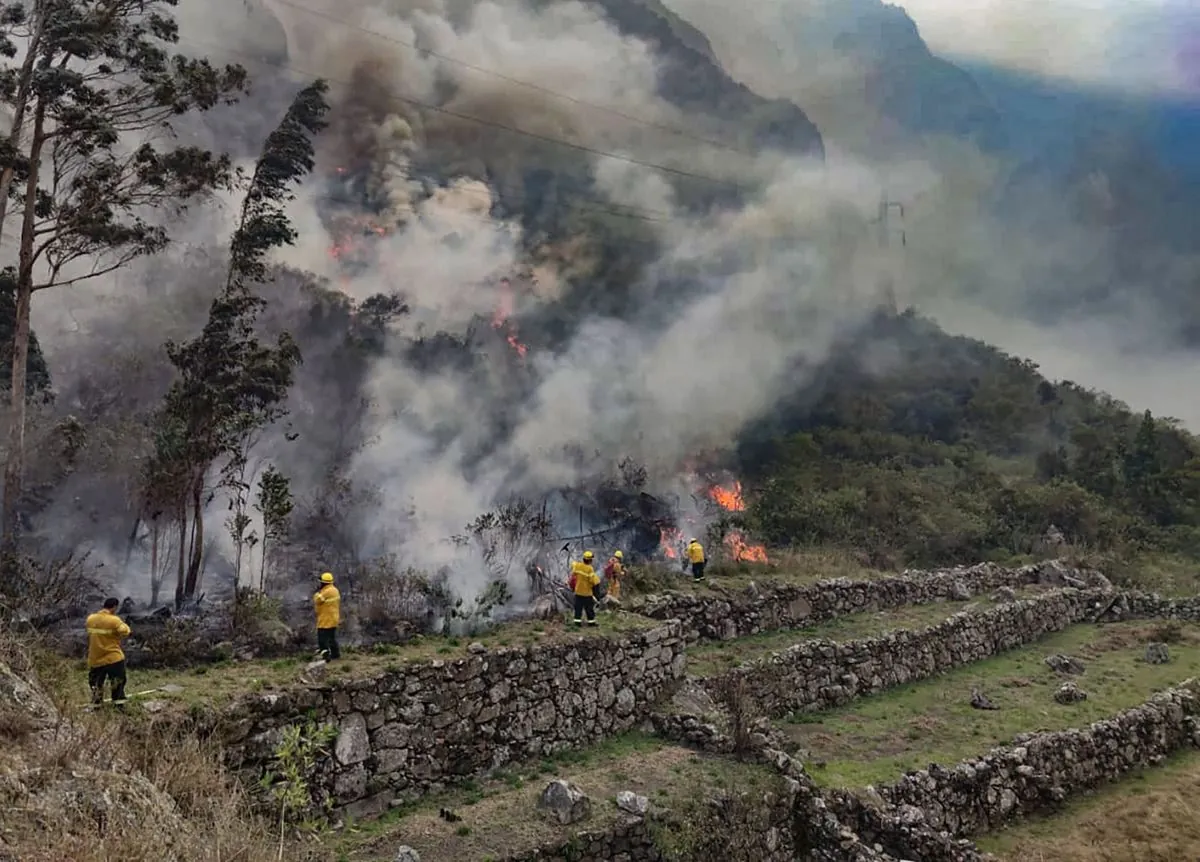In a pressing appeal, Peru's Prime Minister Gustavo Adrianzen has implored farming communities to cease the practice of burning grasslands in Andean and Amazonian regions. This plea comes in the wake of devastating wildfires that have claimed at least 15 lives and left 134 individuals injured as of September 16, 2024.
The situation has become critical, with 222 fire emergencies reported across the nation. While authorities have managed to control 80% of these incidents, concerns remain about potential flare-ups due to the ongoing dry season, intensifying winds, and challenging terrain.
Peru, renowned for its exceptional biodiversity, hosts 84 of the world's 117 life zones. However, this ecological richness is under threat from human-induced fires. The period between August and November typically sees an uptick in forest fires, often resulting from efforts to expand agricultural frontiers or, in some cases, activities of land traffickers.
Cesar Vasquez, the Health Minister, confirmed the tragic toll of these fires. The most severe blazes have been documented in the regions of Cuzco, San Martin, Amazonas, Ucayali, Madre de Dios, and Ancash.
Firefighters and volunteers are engaged in a challenging battle against the flames, often resorting to rudimentary methods such as using water and branches to prevent fire spread in hard-to-reach areas. The difficulty of the terrain has prompted calls for more substantial government intervention.
Manuel Gambini, governor of Ucayali, has specifically requested military aircraft assistance to support ground efforts in areas where rugged geography impedes conventional firefighting methods. The fires are causing significant damage to vital crops, including palm and cocoa, in a country that ranks as the world's ninth-largest cocoa producer.
"Please, I beg you to stop burning grass. All the fires that are happening nationwide have been started by humans."
This crisis underscores the delicate balance between agricultural practices and environmental preservation in Peru. The country, home to the second-largest portion of the Amazon rainforest after Brazil, has witnessed a concerning trend of increasing deforestation since the early 2000s. Between 2001 and 2020, Peru's forest cover decreased by 1.5%, highlighting the urgent need for sustainable land management practices.
As Peru grapples with these wildfires, the incident serves as a stark reminder of the broader challenges facing the nation's unique ecosystems. With over 1,800 bird species, more than 500 mammal species, and over 300 reptile species, Peru's biodiversity is a global treasure that requires careful stewardship and protection from the escalating threats of climate change and human activity.
